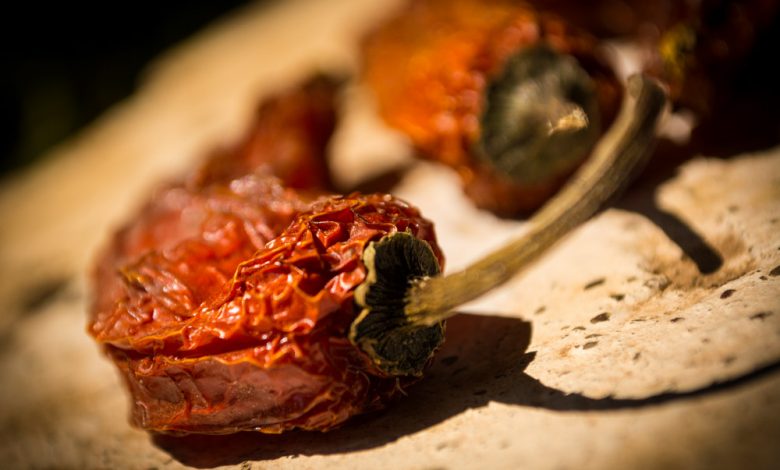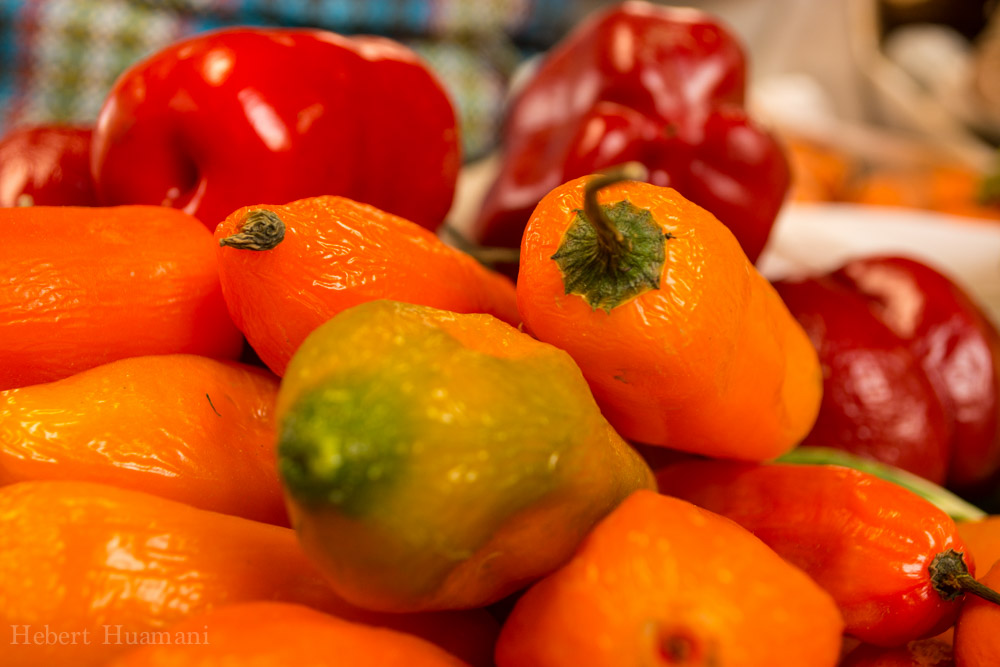Do Peru’s Hot Peppers Contribute to High Rates of Gallbladder Cancer?

I love hot peppers and have since I was a little boy. The first time I ate them, when I was three years old, was a shock and the subject of family stories. Though that was in the US where I eat lots of chile peppers, my years in Peru and Bolivia have made me love the richness, spiciness, and deep flavor of Andean peppers. They are simply superb.
You can imagine my dismay when I came across a scientific paper listed in the professional index Pub Med suggesting hot peppers in some markets in Bolivia Chile, and Peru (including Cusco) might contain toxins that create severe health problems. Of course I downloaded the article and read it carefully.
Though its conclusion is not nearly as dire as its title insinuates, the article is worth considering.
It begins with something important. Chile, Bolivia, and Peru three countries that border on each other, have the highest rates of gallbladder cancer in the world. Though one of the less common cancers, this one is still deadly.

You wonder why these three countries have so much gall bladder cancer. A group of researchers from Niigata and Yokohama, Japan wonder if there is not something in the local diet that explains the high rates. They wonder if the ají, the hot peppers the people eat might explain the high incidence of cancer.
Instead of being concerned, like some finger-waggers, with the chemical that produces the heat (capsaicin), these scholars ask if maybe something is contaminating the peppers in the area that can be linked, in turn, to cancer.
They hypothesize the answer might lie in toxins from fungi, called mycotoxins, that are common to one degree or another in food. They focus on two: aflatoxin and ochratoxin.
People in this area eat food with hot peppers, they reason, and yet some areas have higher rates than others. Earlier work by them suggests eating lots of hot peppers is a risk factor for gall bladder cancer in Chilean women who already have gall stones. They skip a few steps and wonder if the chiles in the high cancer areas are more contaminated with fungal toxins than those in other areas.
So, they went to local markets in high cancer areas and ones with less cancer in Peru and bought hot peppers, especially dried red ones.They also bought peppers in Chile and Bolivia. Strangely, the authors note their sample was not consistent since in the city with the highest rate of gall bladder cancer in Peru, they were unable to get dried peppers and could only buy fresh. This made the date strangely non comparable for a professional study and one wonders how hard they tried and if they went to more than one vendor or market to look.

In Peru, they bought chilies in Trujillo–the place with the highest rates of cancer, Lima, and for comparison (and maybe because they wanted to go to Machu Picchu), they also bought in Cusco a place with only moderate rates.
In Bolivia, they purchased peppers in La Paz since the area around Lake Titicaca has the highest rates of gall bladder cancer in the country and some of the highest in the world. In Chile they purchased peppers in Santiago, the national capital.
Their sampling strategy was strange. By going to simply one market in a city, they ran up against a problem that the one market may have different peppers or may store them differently than other markets. They also did not demonstrate that people in cities buy the same chilies as those in the countryside. They do not discuss or show any knowledge of where ají peppers are grown or how they are distributed. Nor do they discuss the different kinds of peppers people eat in different combinations in different areas. As a result they cannot show their sample is representative of the peppers people actually eat in these areas.
Just going to one market in various cities and buying a few chilies to test in a laboratory for mycotoxins is a big fail. Their strategy sounds more like an aftereffect of tourism than science.
Not surprisingly, given how bad their methodology was, they were unable to demonstrate the connection they hypothesized but their poor methodology makes even that a non-event.
They did find that their sample of Peruvian peppers was high in ochratoxins though low in aflatoxins. They suggest scholars look into the relationship between ochratoxins and gall bladder cancer and they note varied contamination of hot peppers by mycotoxins probably has a lot to do with how the peppers are transported and stored in specific places and among specific merchants after they are harvested.
They also note that fungal toxins are commonly found in food though they may have a role in the risk for cancer. The scholars note in passing that aflatoxins are associated with liver cancer in patients who already have hepatitis B or C.
Apparently, they presume their readers will know that mycotoxins are an add-on for explaining who gets cancer among people who already show major risk factors. In the case of gall bladder cancer the major risk factor is having gall stones.
Unfortunately, Native Americans, whether from North or South America have the highest incidences of gall stones though some attempts at tying this down to genetic determination of heritage, instead of simply assuming it, have failed.
Cusco is a city with a strong indigenous heritage and population. The authors miss the chance to compare it carefully with the city of Trujillo on the coast with a different population mix, or with the city of La Paz that opens off the high plateau where the authors note very high rates of gall bladder cancer. They miss the chance to explain variation among a primarily Native American population and one in which there are also people of other origins.
That study would have been very interesting, given that it is generally simply stated that Native Americans have higher rates of gall stones.
They also missed the boat by going to the city of Santiago, when the data they cite shows the highest rtes for gall bladder cancer are in Chile’s indigenous Mapuche region in its south, and not in the city of Santiago in the country’s center.
Though ill-conceived research that probably should not have been published, the study does suggest important concerns for future research into the lives and ways of the people of Cusco and elsewhere in South America at the same time it suggest regulators take measure to limit mycotoxins in hot peppers.
Reference:
Toshikazu Ikoma, Yasuo Tsuchiya, Takao Asai, Kiyoshi Okano, Naoko Ito, Kazuo Endoh, Masaharu Yamamoto, Kazutoshi Nakamura, “Ochratoxin A Contamination of Red Chili Peppers from Chile, Bolivia and Peru, Countries with a High Incidence of Gallbladder Cancer”, Asian Pacific Journal of Cancer Prevention, (16:14:5987-5991, 2015)

If you buy from Amazon using the links below (even if you get other products) a portion of your purchase supports Cuzco Eats. Thank you.
Gary Nabhan is an important ethnobotanist and food writer, as well as one of the originators of the seed savers movement in the US. He and fellows explore in this book the world of hot peppers, taking them through Mexico and even into Peru. He is a master and a write who draws you and and keeps you turning pages.
Ají panca, or red ají is one of the most important Peruvian peppers and the one referred to int his article. It is now available through importers in the US in both the dried form (above) and processed into a paste (one of the basics of the Peruvian kitchen) below.





David, we missed each other at afj, is there a way to send you something by snail mail
Hi César. I am sorry we missed each other at AFJ. I will write you privately to give a snailmail address. I look forward to seeing what you send.
Cheers,
David